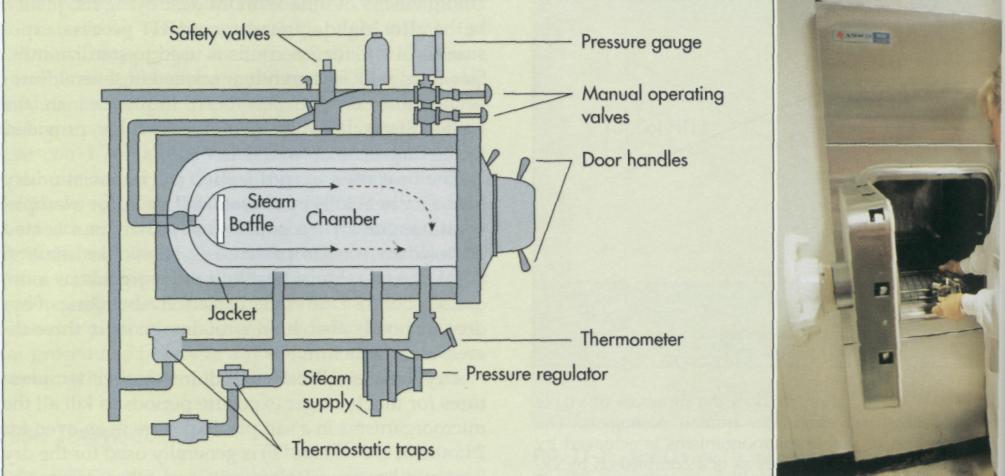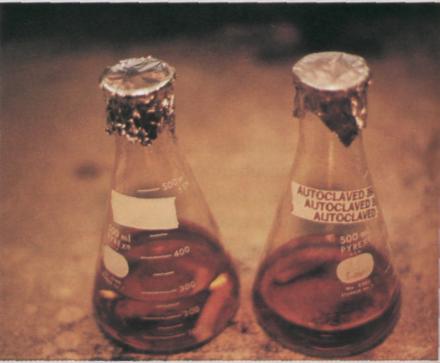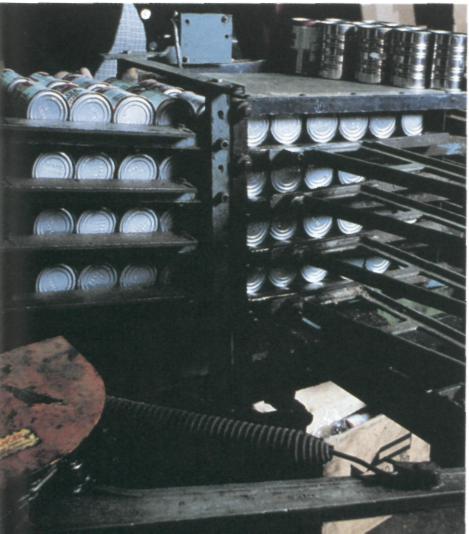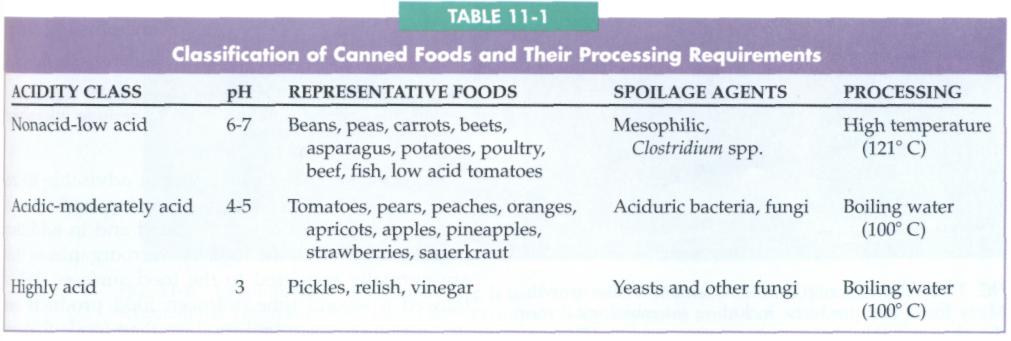
- •Control of microorgani environmental factors
- •Microbial populations can be controlled by modifying environmental conditions.
- •Ms by physical
- •Bringing Sanitary Conditions to Hospitals
- •314 Chapter 11 control of microbial growth and death
- •Sterility Testing
- •Ization process, the medium is exposed to steam at a temperature of 121° с (which corresponds to 15 pounds per square inch pressure) for 15 minutes in an autoclave.
- •Canning is a food preservation method in which suitably prepared foods are placed in glass or metal containers that are heated, exhausted, and hermetically sealed.
- •Because water is required for microbial growth, many foods can be preserved by desiccation.
- •318 Chapter 11 control of microbial growth and death
- •Ters) increases the death rate of microorganisms
- •Important pathogenic implications. Mycobacterium Therefore gamma and X-radiations are referred t
- •Tions, induces the formation or toxic free radical
- •Important pathogenic implications. Mycobacterium Therefore gamma and X-radiations are referred to as
- •, R, , „ , ,1 . I II tions, induces the formation of toxic free radicals,
- •Salem Witch Hunts
- •Ultraviolet light kills microorganisms only on or near the surface of clear solutions by disrupting their dna.
314 Chapter 11 control of microbial growth and death

Sterility Testing
Testing of sterility is an important quality control procedure. Autoclaves have pressure gauges and thermometers that monitor the sterilization operation. These monitors are supplemented with internal monitors. Chemicals that darken when exposed to specific heat treatments are sometimes included with each sterilization batch. These chemicals are often impregnated into a tape or wrapping material so that, after adequate exposure to elevated temperature, the darkened chemical spells out the word STERILE or AUTOCLAVED (see Figure). In this way the proper operation of the sterilizer is monitored and, simultaneously, the sterilized material is properly labelled.
Another method for monitoring the operation of the sterilizer is to use a biological indicator. This is the best method for assuring adequacy of the sterilization procedure because the method actually monitors the death of heat-resistant endospores. Typically, spores of Bacillus stearothermophilus are used for monitoring the effectiveness of steam sterilizers. The indicator consists of a strip of filter paper impregnated with B. stearothermophilus spores. The test strip is exposed to the sterilization procedure and viability is tested by placing the strip in a nutrient solution. After incubation for 24 hours the tube containing the spore strip and nutrient solution is examined for growth. The lack of growth indicates successful sterilization; the occurrence of any growth indicates a failure of the sterilization system.

Photograph showing sterility check with special heat-sensitive tape. Left flask is before sterilization and right flask is after au-toclaving. The heat sterilization causes the letters on the tape to appear, indicating that the media has been autoclaved.
CONTROL OF MICROORGANISMS BY PHYSICAL ENVIRONMENTAL FACTORS 315
Ization process, the medium is exposed to steam at a temperature of 121° с (which corresponds to 15 pounds per square inch pressure) for 15 minutes in an autoclave.
An autoclave is an apparatus in which objects or materials may be sterilized by steam under pressure at temperatures over 100° С
Canning
Canning is the use of heat followed by maintenance of anaerobic conditions (FIG. 11-4). In this preserva-

FIG. 11 -4 Canning is widely used to preserve foods and keep them free of pathogenic microorganisms. Canning involves heat killing of microorganisms and hermetic sealing under anaerobic conditions to prevent recontamination and spoilage.
tion method the high temperature exposure kills all the microorganisms in the product, the can or jar acts as a physical barrier to prevent recontamination of the product, and the anaerobic conditions prevent oxidation of the chemicals in the food. Exposure to 115° С for at least 15 minutes is generally considered necessary in home canning to ensure killing of endospore formers in moderate acid (pH 4.5-5.3) to low acid (pH 5.3-7.0) foods (Table 11-1).
Canning is a food preservation method in which suitably prepared foods are placed in glass or metal containers that are heated, exhausted, and hermetically sealed.
Particular concern is given in canning to ensuring sterility of such foods because of the possible growth of Clostridium botulinum and the seriousness of the disease botulism. Somewhat lower temperatures, for example, exposure to 100° С for 10 minutes, are often employed in the home canning of acidic (pH less than 4.5) foods. This can be done in part because of the lowered thermal resistance of microorganisms under acidic conditions and because of the fact that C. botulinum is unable to grow at low pH values.
The canning industry typically heats food at 121° С for 2.52 minutes. This is 12 times the D value for the endospores of C. botulinum and therefore reduces the probability of the survival of C. botulinum endospores to 10"12. Thus, if there were one spore in every can, the probability of contamination remaining after processing should be reduced to one in every trillion cans. Heating at 121° С for 2.52 minutes therefore should ensure the safety of canned foods with respect to possible contamination with C. botulinum. Several commercial canning operations that have not adhered to the necessary standards and whose operations resulted in outbreaks of botulism have been put out of business. Most problems occur with home canning, where a lack of knowledge or care can result in insufficient heating.

Refrigeration Fails то Protect Against Yersinia enterocolitica
In 1978, containers of chocolate milk were delivered to foods. Unfortunately, the children who drank the milk a school in upstate New York. The milk was refrigerated containing Yersinia enterocolitica developed abdominal over a holiday weekend, but it was contaminated with pain and other symptoms that normally are characteris- Yersinia enterocolitica, a disease-causing bacterium that tic of appendicitis. In all, 200 children were afflicted. can grow at refrigerator temperatures. Incubation over One by one they reported to physicians, some of whom the weekend meant that each container of chocolate diagnosed these as cases of appendicitis, rather than the milk was a culture of Yersinia. Fortunately, the ability of actual cause—a Yersinia infection. Appendicitis is not an a human pathogen to grow at refrigerated temperatures infectious disease and would not afflict 200 children si- is limited to few species like Yersinia enterocolitica. Oth- multaneously. Ten appendectomies were performed be- erwise, refrigeration would not be useful for preserving fore the cause of the disease was recognized.
Removal of Water—Desiccation
Many foods are preserved by desiccation (removal of water). Water is required for microbial growth. By eliminating water or keeping surfaces dry, microbial growth can be prevented. Exposed wood surfaces are often painted to keep the wood dry enough to preclude microbial growth. Canvas and other textiles are preserved in temperate zones by the lack of water in the air, but in tropical zones these same materials are subject to biodeterioration because the humidity is sufficiently high to permit microbial growth.
